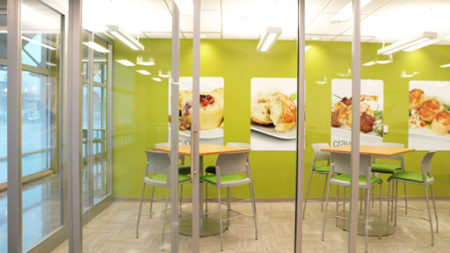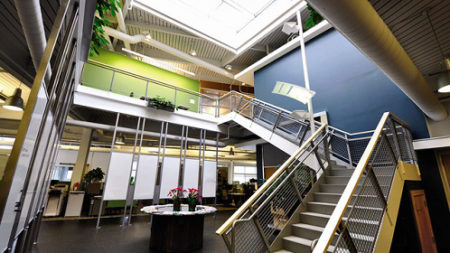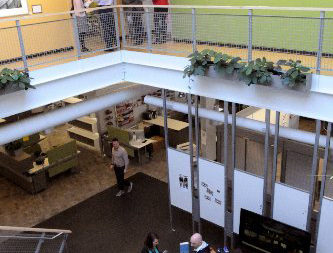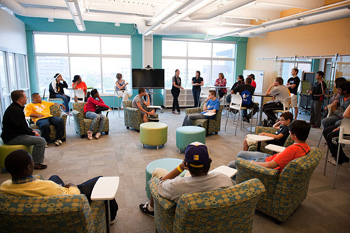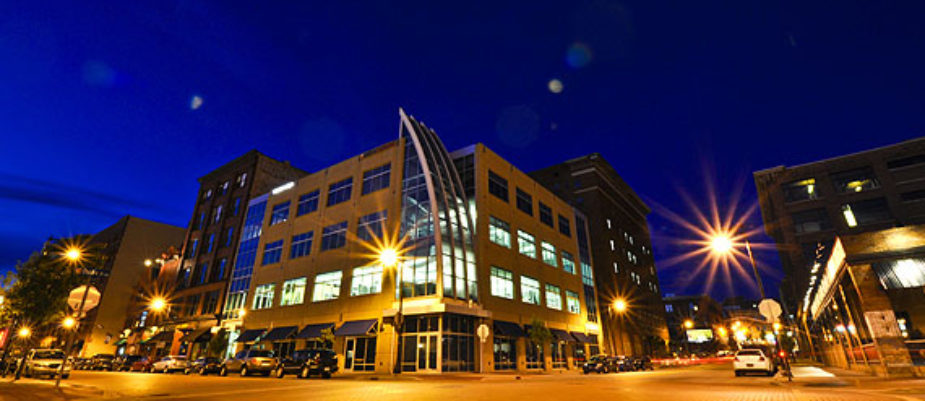
The offices of the future are coming, as is clear from an article by Johns and Gratton in Harvard Business Review (1/2013). DEGW is ready to help companies ride the wave to ‘restore’ knowledge workers dispersed in an integrated community.
“We see a proliferation of Coworking spaces, designed to unite and inspire creative collaborations between people working alone. There are more than 2,000 Coworking projects in the world, grown by 250% in the last two years. “Open and flexible spaces , casual and trendy, contrasting the old ways of working and encourage interaction and occasional discoveries”. A magazine dedicated to the study and spread of this phenomenon: Deskmag was launched. “Coworking Spaces are similar to Bike Sharing: closely related to the well-being of the community, low-cost, and environmentally friendly.” Phrases are taken from the study conducted by Tammy Johns – former vice president of Manpower-Group, now CEO of Strategy and Talent Corporation – and Lynda Gratton – Professor of Organizational Management at the London Business School. The Third Wave of Virtual Work dives into the evolution of “knowledge workers” – whom, thanks to technology have come to virtual work – riding the three waves that created and transformed it.
. Wave 1: generated in the early ’80s by e-mail and forms of communication that face the world. Thus the first army of freelancers was founded that offers businesses new forms of flexible cooperation.
. Wave 2: twenty years later, mobile technology is welcomed (mobile phones) and high-speed connections that meet the needs of “Knowledge Workers” to be in touch with their team, always and everywhere. Creating new career opportunities for “mobile & always on” employees.
. Wave 3: today Coworking initiatives are starting up and multiply in the most dynamic cities in the world, to counter the sense of isolation of Mobile Workers and aggregate talents, giving life to multidisciplinary contamination and new business. It is the era of opportunities for creative collaborations.
The big challenge for companies is to ride the third wave, but how?
“The physical space has to be rethought from scratch – says Alessandro Adamo, Director of DEGW -. Traditional offices have been revolutionized. Initially designed to accommodate expensive technologies and strengthen hierarchies, they have produced side benefits such as cultural alignment, trust, team work and quality of processes. Those that were side benefits yesterday have now become the key to create a real community. The most innovative Managers organize Coworking meeting rooms dedicated to clients, suppliers and employees to “make room” for new integrated processes for the development of new projects, products and services. The goal? Create value for all.
“It ‘s the GRid 70 case, a hybrid space of 28,000 square meters in Grand Rapids, Michigan. Here there are 4 companies, each has a dedicated space in the building, but they have 10,000 square meters of open space, shared and dynamic, to practice Coworking. The nice thing is that they are always full! Or the case of the global consulting firm that always had offices always deserted because consultants often work with clients, from home, or while travelling. The company had the bright idea of changing the office space by launching the Coworking project. In addition to reducing costs, the redesign has also modernized the corporate culture and people: new employees spend much time in these places but the surprise is that managers have been attracted by the energy of these spaces, and they are happy to “revolve around” them and to interact.
“Even in Italy – says Adamo – we are riding the wave by exploiting the ability of some companies to design workspaces that can improve processes and business performance: People, Place, Performance, more fundamental issues. The constant search of Work-Life Balance will award farsighted managers, those that take advantage of the best re-design of physical space, as an opportunity to redesign work processes and organization. It will have a dynamic and positive impact on the cities and neighborhoods where we live. We will waste less time, less energy, less resources, and develop more and more interesting relationships with our neighbors.

